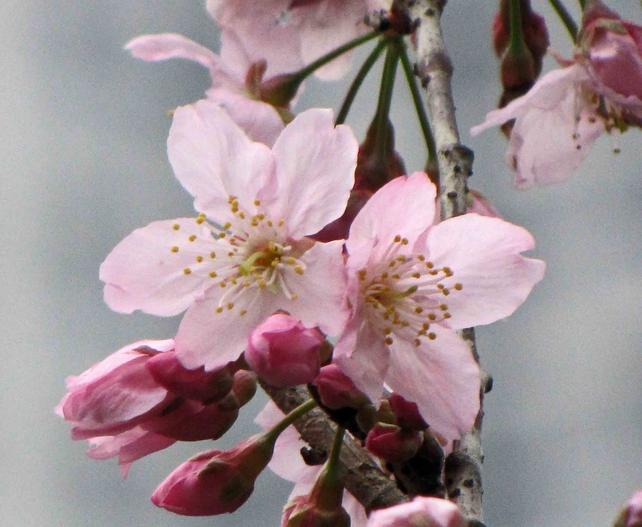Fuji Cherry
(Prunus incisa)
Fuji Cherry (Prunus incisa)
/
/

阿橋花譜 HQ Flower Guide
CC BY-SA 2.0



























Estimated Native Range
Summary
The Fuji Cherry is valued for its early spring blossoms, which can add a burst of color to the garden before many other plants have begun to wake from winter dormancy. It is often used in ornamental plantings, such as in residential gardens, urban parks, and as a specimen plant. The Fuji Cherry is hardy to -20 °C and can adapt to a range of soil types, provided they offer good drainage. It prefers full sun but can tolerate some light shade. While it is generally low-maintenance, it can be susceptible to common cherry ailments such as bacterial canker and aphids. The cultivar ’Umineko’, resulting from a cross with Prunus speciosa, is noted for its upright form and profuse white flowers.CC BY-SA 4.0
Plant Description
- Plant Type: Shrub, Tree
- Height: 7-8 feet
- Width: 7-8 feet
- Growth Rate: Moderate
- Flower Color: Pink, White
- Flowering Season: Spring
- Leaf Retention: Deciduous
Growth Requirements
- Sun: Full Sun, Part Shade
- Water: Medium
- Drainage: Slow, Medium, Fast
Common Uses
Bee Garden, Bird Garden, Border Plant, Butterfly Garden, Edible*Disclaimer: Easyscape's listed plant edibility is for informational use. Always verify the safety and proper identification of any plant before consumption., Fragrant, Hedges, Low Maintenance, Rabbit Resistant, Rock Garden, Salt Tolerant, Showy Flowers, Street Planting
Natural Habitat
Cool temperate forests, mountain slopes, and forest edges in Japan
Other Names
Common Names: Märzkirsche, Fujikers, Dvärgkörsbär
Scientific Names: , Prunus incisa, Cerasus incisa, Prunus incisa var. longipes, Prunus incisa f. yamadei, Prunus incisa f. plenissima, Prunus incisa f. serrata, Prunus incisa var. serrata, Prunus incisa var. urceolata, Prunus incisa f. bellura
GBIF Accepted Name: Prunus incisa Thunb.